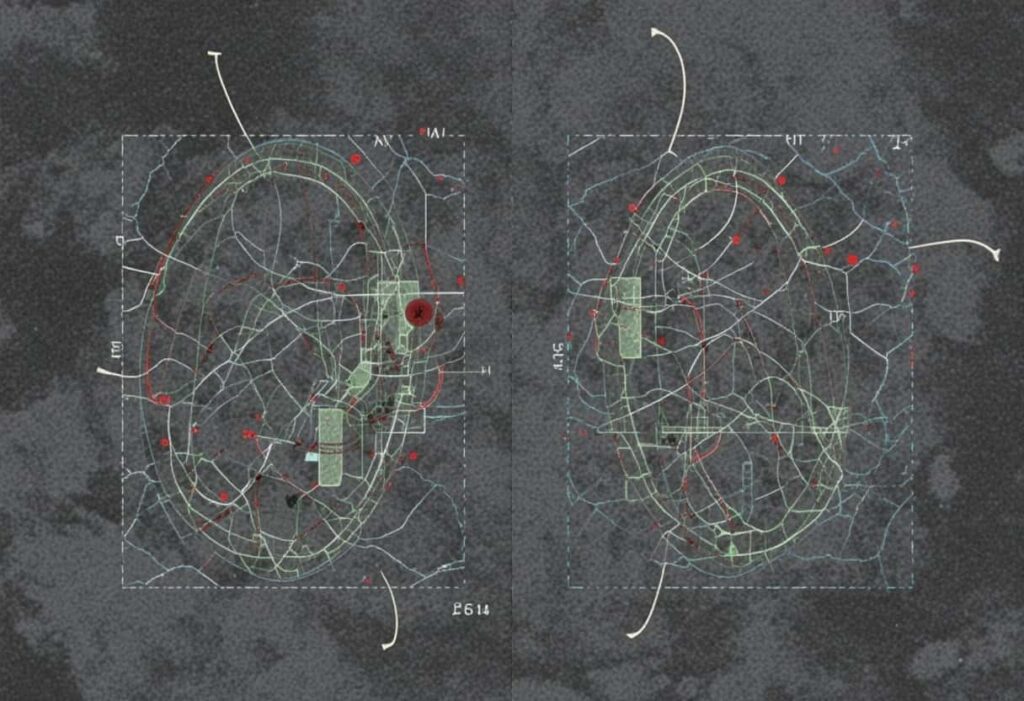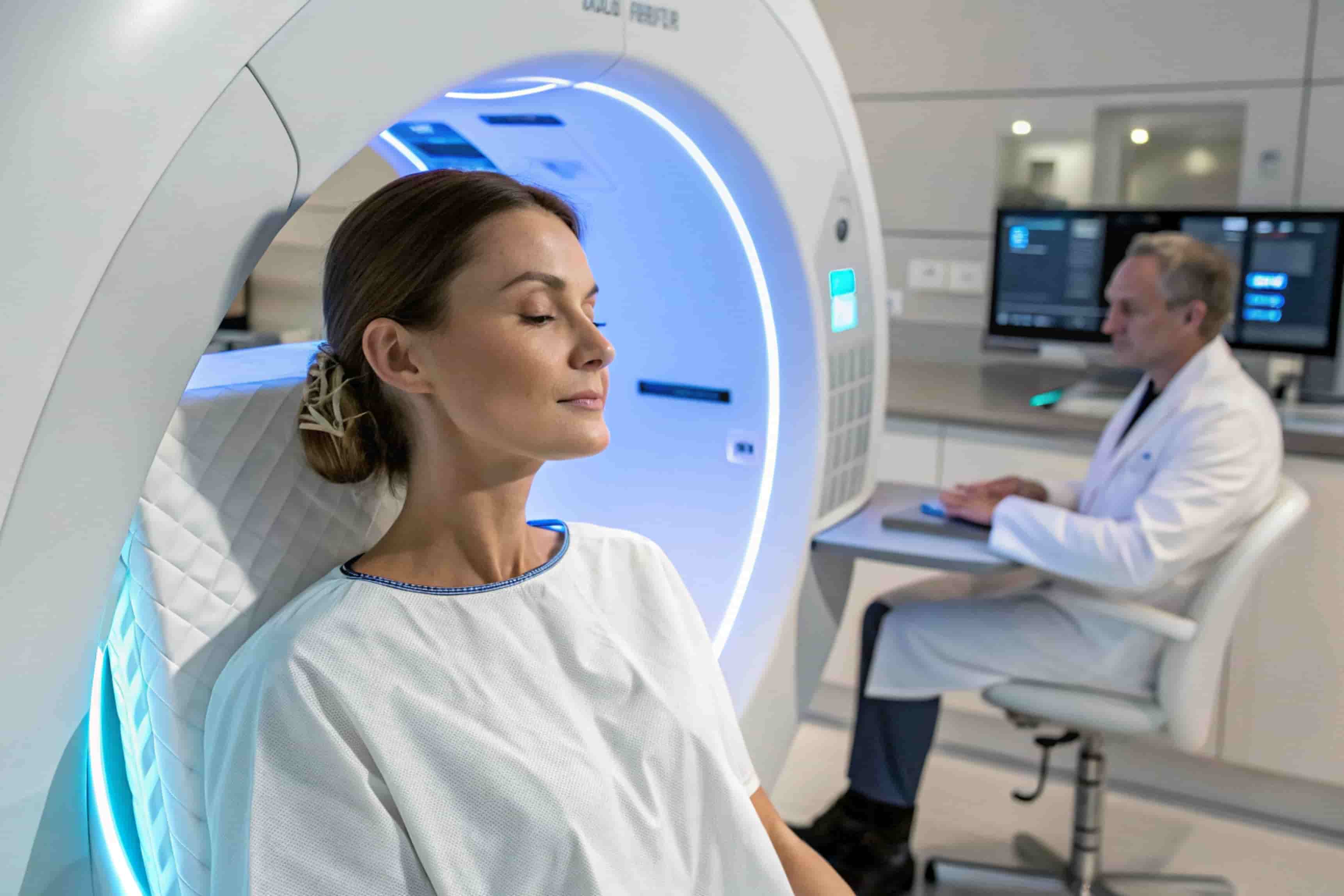US20120065539A1 represents a significant leap in the field of medical diagnostics, specifically in the early detection and monitoring of breast masses. This United States patent application outlines a sophisticated method that uses electrical impedance to identify and classify breast tissue abnormalities. Unlike traditional imaging technologies, this method introduces a non-invasive approach that relies on the natural electrical properties of human tissue.
The core innovation revolves around detecting changes in impedance, which often occur when tissues become cancerous or develop benign masses. By offering a safer and potentially more accessible diagnostic pathway, the invention could play an essential role in advancing breast cancer care and improving early intervention strategies.
What Is the Foundation of US20120065539A1 and Who Are the Inventors Behind It?
The patent application titled “Use of Impedance Techniques in Breast-Mass Detection” was published on March 15, 2012, and was originally filed on November 20, 2011. Developed by Roman A. Slizynski and David J. Mishelevich, the innovation introduces a breakthrough diagnostic concept in breast health monitoring. The classification under A61B5/053 identifies it within medical diagnostics that involve measuring electrical impedance in human tissues.

This patent is part of a continuation-in-part series, which means it evolves from earlier filings by the same inventors. It incorporates new technical insights while expanding on prior technologies for tissue diagnosis, particularly targeting the early and reliable detection of breast masses.
How Does Impedance-Based Diagnosis Work in US20120065539A1?
What Is Electrical Impedance?
Electrical impedance refers to the opposition that a material offers to the flow of an alternating electric current. In human tissue, different structures—such as fat, muscle, glandular, and cancerous tissues—exhibit distinct impedance signatures. This variance provides a pathway to distinguish between normal and abnormal tissue types.
Application in Breast Health:
In the case of breast cancer detection, the technology described in US20120065539A1 utilizes a specialized device that sends electrical signals through the breast. These signals travel from electrodes placed at the breast-chest wall junction to a receiving electrode located at the nipple. The returning signals are then analyzed for impedance changes, which helps identify whether the tissue is normal, benign, or malignant.
Breakdown of the Invention’s Key Components:
Device Configuration:
The patented system includes the following components:
- Signal Generator: Sends electrical pulses through the breast tissue.
- Source Electrodes: Positioned strategically to deliver the signal.
- Receiving Electrode: Placed at the nipple to collect the return signal.
- Signal Processor/Computer: Analyzes magnitude and phase variations.
- User Interface Display: Provides visual feedback for clinicians.
Diagnostic Method:
The process begins by applying a low-level electrical signal to the tissue. The return signal is then recorded, and its characteristics—such as frequency spectrum and phase response—are compared with known values of healthy and abnormal tissues. Through this comparative method, the system can classify the tissue and even monitor its changes over time.
Advantages Over Traditional Imaging:
Non-Invasive Approach:
Unlike mammography or ultrasound, which require mechanical compression or sound waves, this technique is entirely electrical. It reduces discomfort and may be more suitable for frequent screenings, particularly for individuals with dense breast tissue.
Real-Time Results:
The system is designed to offer immediate diagnostic feedback, making it potentially valuable in both clinical and remote settings. This real-time capability allows healthcare providers to make timely decisions regarding treatment or further evaluation.
Enhanced Detection in Dense Tissue:
One of the limitations of traditional imaging is reduced effectiveness in dense breast tissue. Electrical impedance, however, measures cellular characteristics rather than structure, which can improve diagnostic accuracy in such cases.
Implications for Breast Cancer Monitoring:
Early Detection Potential:
Because the system can pick up subtle impedance changes, it may be effective in identifying early-stage abnormalities that are not yet visible on imaging scans. This early detection advantage can significantly improve prognosis by enabling earlier treatment interventions.
Therapy Progress Tracking:
Another major use of the technology is in treatment monitoring. When a therapeutic agent is introduced into the breast ducts or tissue, changes in impedance can reflect how the mass is responding. This continuous monitoring reduces the need for repeated imaging and offers a dynamic view of treatment efficacy.
Broader Applications and Future Potential:
Clinical Integration:
The technology behind US20120065539A1 has the potential to be integrated into compact diagnostic tools suitable for use in hospitals, outpatient clinics, and even mobile diagnostic units. As telemedicine continues to grow, such tools could become part of routine home care for high-risk patients.
Expansion Beyond Breast Tissue:
While the primary focus of this patent is breast mass detection, the same principles of impedance analysis can be adapted for use in other parts of the body. Possible applications include identifying tumors in the liver, prostate, and even brain, where traditional biopsy or imaging may be invasive or risky.
How Does US20120065539A1 Improve on Earlier Impedance-Based Technologies?
US20120065539A1 is not a standalone concept—it extends and enhances previous work in the field of impedance-based tissue diagnostics. While earlier patents explored the basic idea of using electrical signals to detect tissue differences, this filing introduces key advancements.
Notably, it improves signal processing accuracy and electrode placement, resulting in more reliable and focused readings. These technical upgrades help make the system more effective and adaptable in real-world clinical settings, paving the way for broader medical use.
What Are the Challenges and Considerations of US20120065539A1?
Signal Variability:
Electrical signals in human tissue can change due to factors like hydration levels, physical movement, and temperature shifts. These variations can affect measurement accuracy. Ensuring the device provides consistent, repeatable results across different users and conditions requires advanced calibration, which remains a key technical hurdle in real-world clinical applications.
Regulatory Approval:
Before entering the market, the device must undergo thorough evaluation and gain approval from health authorities such as the FDA. Clinical trials are necessary to prove its safety, reliability, and effectiveness. Regulatory compliance is essential to ensure it meets medical standards and earns the trust of healthcare professionals and patients alike.
Patient Acceptance:
Introducing a new diagnostic method often requires public education and professional training. Both healthcare providers and patients may be unfamiliar or hesitant about electrical impedance technology. Addressing concerns, building awareness, and demonstrating the method’s benefits will be crucial in achieving broader acceptance and routine use in clinical environments.
Why US20120065539A1 Matters in Today’s Healthcare Landscape?
With the rising global burden of breast cancer, there is an urgent need for diagnostic tools that are accurate, cost-effective, and accessible. US20120065539A1 addresses these challenges with a forward-thinking approach that goes beyond visual imaging. Its non-invasive nature, diagnostic speed, and potential for broad application give it real promise in transforming how breast health is monitored and managed.
As technology advances and healthcare moves toward personalization and early detection, inventions like this pave the way for more intuitive and responsive diagnostic experiences. Whether used alone or in conjunction with imaging technologies, impedance-based diagnostics could mark a new era in cancer care—one where detection is faster, monitoring is seamless, and outcomes are significantly improved.
FAQs:
1. What sets US20120065539A1 apart from traditional breast cancer detection methods?
US20120065539A1 introduces a non-invasive method based on electrical impedance, unlike traditional imaging like mammography or ultrasound. It analyzes tissue at a cellular level, offering real-time results without radiation or physical compression. This makes it more comfortable and potentially effective for detecting abnormalities in dense or early-stage breast tissue.
2. Can this impedance-based device be used alongside mammography?
Yes, the technology described in US20120065539A1 is designed to complement existing imaging methods. It can provide additional data on tissue characteristics that may not be visible on scans, helping doctors make more informed decisions, especially in complex or unclear cases.
3. Is the technology behind US20120065539A1 safe for frequent monitoring?
Absolutely. Since it uses low-level electrical signals rather than radiation, it poses minimal risk to patients. This makes it suitable for regular screenings or continuous monitoring during breast cancer treatment, offering a safer alternative for long-term observation.
4. How accurate is the system in distinguishing between benign and malignant masses?
The device analyzes both the magnitude and phase of electrical signals to detect tissue abnormalities. These signals are compared to known impedance patterns of healthy and diseased tissue, which enhances classification accuracy. While clinical validation is required, the method shows strong potential for early and precise mass differentiation.
5. Could the impedance technique in US20120065539A1 be adapted for other diseases?
Yes, the core principle of using electrical impedance for tissue assessment is versatile. With further development, similar technology could be adapted for detecting tumors or abnormalities in other parts of the body, such as the liver, prostate, or even soft tissues in neurology or orthopedics.
Conclusion:
US20120065539A1 represents a promising shift in medical diagnostics by introducing a non-invasive, impedance-based method for detecting and monitoring breast tissue abnormalities. By moving beyond traditional imaging limitations, it opens the door to earlier detection, real-time insights, and broader access—especially for patients with dense tissue or those undergoing treatment.
As healthcare increasingly leans toward precision and preventative care, this innovative technology could redefine how clinicians approach breast cancer diagnostics, ultimately improving patient outcomes and expanding diagnostic capabilities across various medical fields.
Related post:









